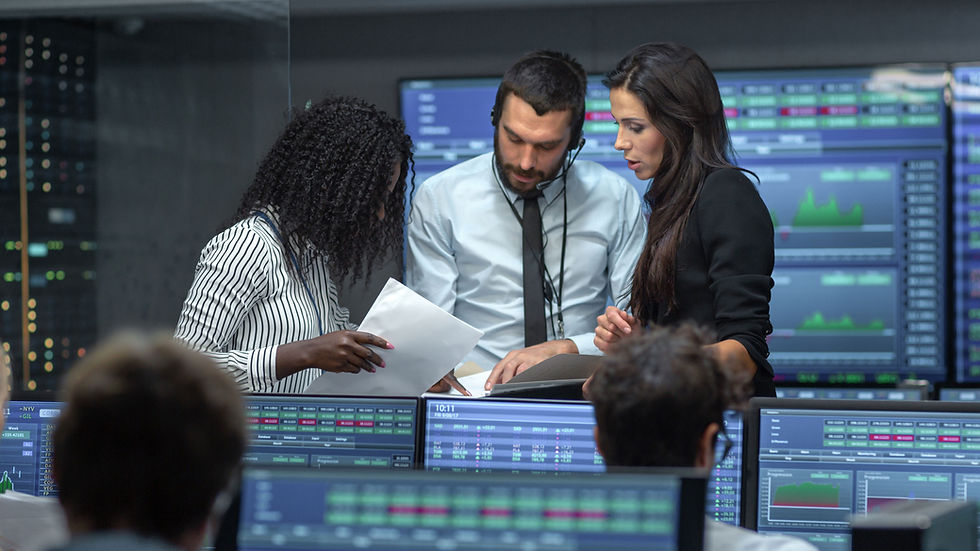How to invest in alternative assets like art and collectibles?
- Money Mentor

- Aug 21, 2023
- 3 min read
Investing in traditional assets like stocks and bonds is common, but many investors seek ways to diversify their portfolios and explore alternative investments that offer both potential financial gain and the joy of ownership. Art and collectibles are among these alternative assets, appreciated not only for their investment potential but also for their cultural and aesthetic value. In this blog, we will delve into how to invest in art and collectibles, the benefits and challenges, and tips for success in this exciting and unique realm of alternative assets.

Recommended Making Money Books
Section 1: Understanding Art and Collectibles as Investments
Before diving into the details, it's essential to grasp the fundamentals of investing in art and collectibles.
1.1 Types of Alternative Assets
Alternative assets encompass a wide range of investments beyond traditional stocks and bonds, including:
Art: Paintings, sculptures, and other fine art.
Collectibles: Items like rare coins, stamps, vintage cars, and vintage wine.
Antiques: Objects of historical significance, often of artistic or cultural value.
Memorabilia: Items with intrinsic value to collectors, such as sports memorabilia or historical artifacts.
1.2 Investment Potential
Investing in art and collectibles can offer several potential benefits:
Diversification: These assets have a low correlation with traditional investments, potentially enhancing portfolio diversification.
Tangible Value: Owning art and collectibles can provide personal satisfaction and a tangible asset.
Potential for Appreciation: Certain pieces can appreciate significantly in value over time, offering investment opportunities.
Intrinsic Value: Art and collectibles often have intrinsic value, whether for their artistic or cultural significance.
Section 2: Strategies for Investing in Art and Collectibles
Now, let's explore various strategies for investing in art and collectibles.
2.1 Define Your Investment Objectives
Before starting, determine your investment goals. Are you looking to build a collection for personal enjoyment, make short-term gains, or create a long-term investment strategy? Your objectives will influence your approach.
2.2 Conduct Thorough Research
Research is fundamental to success in this alternative investment realm. Consider the following aspects:
Market Trends: Study trends in the art and collectibles market. Are certain types of art or collectibles currently in demand?
Expert Opinions: Consult experts, curators, and collectors for insights into the market.
Authentication: Ensure the authenticity of the item you're considering investing in.
2.3 Diversify Your Holdings
Diversification is crucial. Don't put all your investment capital into a single piece. Spread your investments across different types of art or collectibles to mitigate risk.
2.4 Buy What You Love
While investment potential is essential, remember that art and collectibles can be highly personal. Investing in pieces you genuinely appreciate can make the experience more enjoyable.
2.5 Set a Budget and Stick to It
Define your investment budget and stick to it. The excitement of acquiring art or collectibles can lead to impulsive purchases. Discipline is key.
2.6 Consider Investment Vehicles
There are various ways to invest in art and collectibles, including:
Direct Ownership: Buying art or collectibles outright and owning them directly.
Fractional Ownership: Investing in a fraction of an artwork through platforms that enable shared ownership.
Art Funds: Participating in investment funds that focus on art and collectibles.
Art Marketplaces: Using online marketplaces to buy and sell art and collectibles.
Section 3: Challenges and Risks
Investing in art and collectibles isn't without challenges and risks.
3.1 Lack of Liquidity
Art and collectibles can be illiquid investments. Selling them may take time, and finding buyers can be challenging.
3.2 Valuation Uncertainty
Determining the value of art and collectibles is often subjective. It depends on factors like the artist's reputation, the piece's condition, and current market demand.
3.3 Market Volatility
The market for art and collectibles can be subject to price fluctuations. Economic and market conditions can affect demand and prices.
3.4 Authentication and Fraud
The art and collectibles market is susceptible to fraud and forgery. It's essential to authenticate items carefully.
3.5 Costs and Fees
Investing in art and collectibles can come with various costs, including transaction fees, storage costs, and insurance.
Section 4: Safeguarding Your Investments
To protect your investments in art and collectibles, consider these steps:
4.1 Insurance
Ensure you have proper insurance coverage to protect your art and collectibles from theft, damage, or loss.
4.2 Secure Storage
Store your investments in a secure and controlled environment. For valuable pieces, consider professional storage solutions.
4.3 Documentation and Records
Maintain comprehensive records of your acquisitions, including receipts, provenance, and authentication documents.
4.4 Regular Appraisals
Periodically have your art and collectibles appraised to assess their current value.
Section 5: Seeking Professional Guidance
Given the complexities and risks associated with investing in art and collectibles, consulting with experts is advisable. Appraisers, dealers, and advisors specializing in art and collectibles can provide valuable insights and guidance.
Conclusion
Investing in art and collectibles is a unique and potentially rewarding venture, blending financial gain with aesthetic appreciation. By defining your investment objectives, conducting thorough research, diversifying your holdings, and setting a budget, you can approach this alternative asset class with confidence. It's essential to stay informed about market trends, consider the risks and challenges, and implement safeguarding measures to protect your investments. Remember that investing in art and collectibles requires patience, due diligence, and a genuine passion for the objects you choose to invest in.
Related Content


